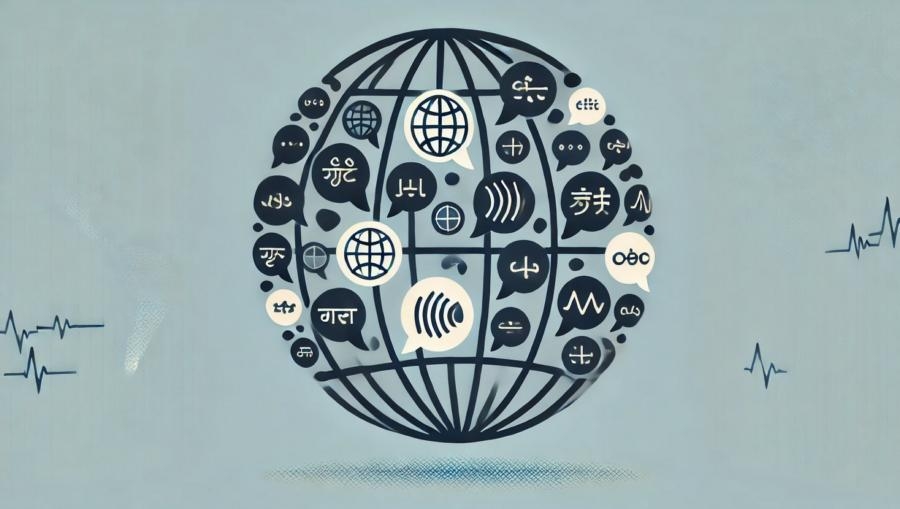Accents, Accessibility and Global Healthcare Messaging That Doesn't Get Lost in Translation

Why One Voice Can’t Rule Them All
Medical voiceovers are like prescription labels—if you get them wrong, the results can range from mild confusion to full-blown disaster. You might think a well-articulated, neutral-sounding voice would work everywhere, but the reality is far messier.
Healthcare messaging has to be clear, engaging, and, most importantly, trustworthy. And trust doesn’t just come from words—it comes from the way those words sound. The wrong accent in the wrong place can make a message feel cold, foreign, or downright suspicious.
Imagine you’re in rural India, and a slick American voice starts explaining how to manage diabetes. Or a fast-talking Londoner is narrating an important PSA for senior citizens in Alabama. These scenarios don’t just sound odd; they create barriers to understanding and can even make patients tune out completely.
Lost in Accentuation
Accents are more than just regional quirks; they carry deep social and cultural associations. In some countries, certain accents are linked to prestige and authority, while others may evoke familiarity and warmth.
For instance:
- A British RP (Received Pronunciation) accent may sound intelligent and credible to some audiences but overly formal or even elitist in certain parts of the world.
- An Australian accent might be engaging and friendly, but if the medical content is highly technical, some regions may struggle with comprehension.
- In Latin America, a Spanish voiceover using a European accent can feel distant or even patronizing compared to a local Latin American voice.
If the goal is to create healthcare messages that truly resonate, these nuances can’t be ignored. Language isn't just about words—it's about how those words make people feel. And when it comes to health, feelings matter.
The Medical Mumble Problem
Complex medical terminology is a beast on its own. Now throw in an unfamiliar accent, and suddenly "gastrointestinal dysmotility" sounds like someone sneezed into the microphone.
A poorly matched voiceover can turn already confusing medical jargon into an auditory puzzle. If a listener has to replay a sentence three times just to understand it, they’re not focusing on the message—they’re just trying to decipher what was said.
This is why medical voiceover artists do more than just "read a script." They break down complex information into digestible, accessible speech. Their tone, pace, and pronunciation can mean the difference between clarity and chaos.
Building Trust, One Voice at a Time
Trust in healthcare is a fragile thing. People are more likely to believe a message when it sounds like it’s coming from someone who understands them—linguistically, culturally, and even emotionally.
A study on medical communication found that patients are more receptive to instructions when delivered in a familiar accent. It’s not just about clarity; it’s about connection. A voice that sounds "local" carries an unspoken assurance: "This information is meant for you."
In multilingual regions, this gets even trickier. Take India, where dozens of languages are spoken across different states. A generic Hindi voiceover might work in some areas, but in Tamil Nadu, where Tamil is dominant, it could feel irrelevant. This is why healthcare campaigns in such regions often employ multiple voice artists to tailor messaging to specific demographics.
The AI Voice Dilemma
As AI voice technology improves, there's growing temptation to replace human voice artists with synthetic voices. While this might seem cost-effective, it raises a crucial question: Can AI replicate the warmth, nuance, and trust-building power of a human voice?
So far, the answer is "not quite." AI-generated voices are getting better at mimicking accents, but they often lack the natural rhythm and emotional depth that human voices bring. A machine might be able to pronounce "myocardial infarction" flawlessly, but can it convey the urgency and empathy needed for a heart attack awareness campaign?
Moreover, AI tends to default to generic, "neutral" accents, which, as we’ve established, don’t always work in every region. There's also the issue of bias—many AI systems are trained primarily on Western English accents, meaning they may struggle with less common dialects and pronunciations.
A Prescription for Better Voiceovers
If global healthcare messaging wants to be truly effective, it needs to ditch the one-size-fits-all approach. Here’s what needs to happen:
- Localized voiceovers: Instead of using a single voice for an entire campaign, adapt messaging to fit regional accents and languages.
- Cultural sensitivity: Beyond just pronunciation, voice actors should understand the cultural nuances of their audience.
- Clear and accessible speech: Whether it’s a human or AI, the voice should prioritize clarity without sounding robotic.
- Testing and feedback: Healthcare organizations should test voiceovers with target audiences before rolling them out widely.
Medical voiceover artists aren’t just narrators; they’re bridges between critical healthcare information and the people who need it. And as healthcare becomes more globalized, their role is only going to become more essential.
Accent-uating the Positive
At the end of the day, a voice isn’t just a sound—it’s a messenger. And in healthcare, that messenger needs to be trusted, understood, and, ideally, not mistaken for a telemarketer.
So, the next time you hear a well-crafted medical voiceover that speaks directly to its audience, take a moment to appreciate the careful thought behind it. Because somewhere, a team made sure that voice wasn’t just heard—but truly understood.
|
|







